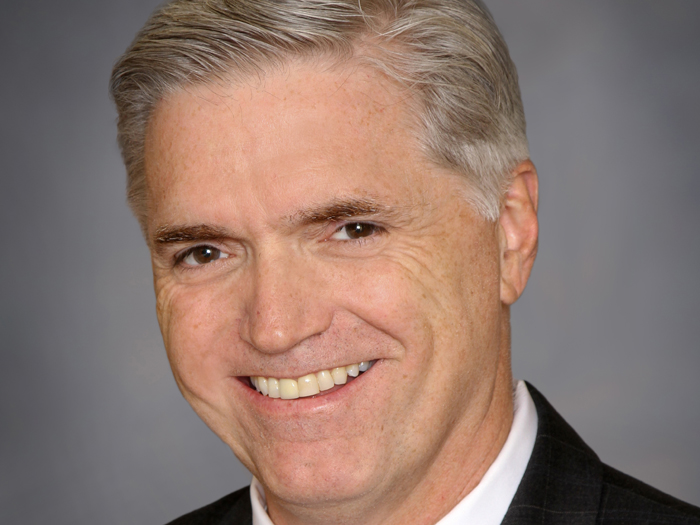Four Ways Blockchain Can Help the Insurance Industry Tackle Climate Change

We know that insurers are embracing blockchain ledgers. And we know that they’re fighting climate change. At first glance, these can seem like two entirely separate endeavors, but they may prove to be closely intertwined.
When it emerged, blockchain was virtually synonymous with wasteful carbon emissions: Bitcoin mining relies on a proof-of-work model that requires massive server farms to generate new currency; by some accounts, a single bitcoin has the same carbon footprint as 330,000 credit card transactions.
But most blockchains, including those used in insurance, operate on a proof-of-stake model, “where the emissions are 99.9% lower,” said Sid Jha, founder and CEO of Insurtech and climate risk solutions platform Arbol. “It’s a shared database that allows you to trace changes made to it, and it’s nothing more than that. It’s just another tool in our toolbox to bring efficiencies.”
That tool is simple in concept but powerful in execution.
“It’s really about improving trustworthiness among insurers and reinsurers, and that’s one of the significant advantages of using blockchain in insurance — because you can create that trust between different entities,” said Marlene Dailey, financial services senior analyst, RSM. “It allows for that immutability and auditability, and everyone has access to it who’s within the block.”
As it turns out, trust is an enormous factor in getting different parties to cooperate on emissions reduction, especially across international borders. But that’s just one of the ways that blockchain may prove essential to the insurance industry’s efforts to fight the existential threat of climate change.
When Catastrophe Strikes
Claims due to extreme weather events have been on the rise for years. And while we can’t control when catastrophe strikes, we can control how effectively we respond.
Blockchain is already being used to improve efficiency and response times, and it begins with smart contracts — agreements whose terms are written directly into code that lives on the blockchain and can self-execute when the right conditions are met.

Marlene Dailey, financial services senior analyst, RSM
These can be especially powerful when combined with parametric insurance, in which covers are similarly triggered by a predetermined external event, rather than a specific loss.
“The combination of the two — smart contracts and parametric insurance — can then automate a significant portion of the flow, because the data is read in by the smart contract and the payments are determined,” said Jha.
“This can then be scaled up to have hundreds of thousands if not millions of points paying out simultaneously as a storm tracks through an area like Florida.”
Even when loss doesn’t involve property damage — as in the case of business interruption resulting from ever more frequent hurricanes — smart contracts and parametric covers can issue payment much more rapidly after an event occurs.
The benefit is twofold: The administrative burden on carriers is drastically reduced, and insureds see their claims filled more quickly.
“In such a situation, there is no ambiguity in terms of what the payment needs to be,” Jha said. “We can pay out a few weeks after a storm instead of the few years that it can traditionally take to settle claims, with all the litigation and other issues.”
The automation and transparency of smart contracts can also help to reduce claims fraud. “What happens with blockchain,” Dailey said, “it really does become that single source of truth, because you have information that’s untampered with … and you also have a ledger, so you can audit it and have timestamps and look at history.”
Assembling Risk Capital
As climate change fuels more severe and frequent hurricanes, wildfires and other natural disasters, underwriters are pulling back, diminishing capacity and necessitating more creative solutions from Nat CAT brokers trying to assemble much-needed coverage.
The growing complexity of these covers is another problem blockchain can help to solve.
“When you think about what blockchain is best suited for,” Jha said, “it’s when there are multiple parties who do not necessarily trust each other but who need to agree on a source of truth and coordinate action amongst each other. That action could be making payments, which is a lot of what the cryptocurrency market focuses on.
“But in the case of insurance, when you think about, for example, complex transactions that involve insurers, reinsurers, brokers, agents, different intermediaries — all managing this program and sending information to each other and assessing risks — that’s where something being on chain can add auditability and traceability that can bring a lot of efficiencies, especially as many insurance deals have many different risk capital providers in terms of reinsurers sharing risk.”
Sharing Data, Improving Models
There was a time when we looked back at historical records to confidently predict the likelihood of extreme weather events in the future. But climate change has introduced more volatility into weather patterns, making these trends less reliable over time.
“The historical norms of 50 or 100 years ago are not the norms of today or the future,” said Kat Kraft, director of product at climate resilience analytics firm Teren.
“We now need to move away from thinking only about return intervals. Return intervals are important, for sure, but we need to think about that 30-year flood or that 30-year rain event as something that might have been truly anomalous in the past and isn’t in the future.”
Clearly, there’s a need for updated climate models. But this effort comes with two major challenges.
For one thing, data has value, and the people who own it don’t typically want to make it freely available to everyone. That data also comes in myriad different forms that need to be standardized and configured before it can be used, lest climate modelers end up trying to compare apples to oranges.
For another, even once you’ve come up with a new climate model, there has traditionally been no easy path to getting it into the hands of the people who need it, like actuaries and insurers.
Blockchain makes it possible share data in a secure way — and that includes actuarial data, meteorological data, atmospheric data and all the other types of data climatologists use.
Blockchains also enable the creators of new climate models to make them available and — just as importantly — provide them in a transparent, open-source way that allows them to be evaluated more effectively.

Sid Jha, founder and CEO, Arbol
Jha is already turning this possibility into a reality. “One of the things we did at Arbol was we released our own internal data network to the outside world,” Jha said. “It’s built on blockchain. It’s called dClimate. And it gives an open-source framework to climate information.
“Users can come to a standardized platform and access all types of climate data, from hurricanes to temperatures to wind speeds. And contributors can contribute data and, soon, models that they might have, which can be skills scored, all in a decentralized framework.
“If you’re, say, an academic group with a really good hurricane model, currently it is very, very difficult for you to get that to the right end user, like an insurance company, because you need to create a start-up, have a marketing budget. Client acquisition is very difficult. It becomes a challenge to get the best models out there to market. At the same time, the existing companies in the space then charge very exorbitant sums for modeling that could be open-source.
“By allowing an open-source framework, you start to address the data issues and the modeling issues that currently live in silos and are very difficult to access, very expensive and very opaque,” Jha said.
“We see ourselves as part of that movement to bring transparency to climate on the insurance side — parametric insurance is very transparent, but the same kind of ethos is needed on the data and modeling side.”
Fighting Uncertainty in the Offsets Market
Quite apart from blockchain’s potential to reduce claims fraud, it may also bring some much-needed transparency to the rapidly expanding offsets market.
Carbon offsets can be broken down into two broad categories.
Under the first, a government sets a cap on carbon emissions at a regional level; allowances to emit a certain amount of carbon are then determined by a regulator and distributed by fiat. These rights can then be traded: If an entity exceeds its carbon emissions allowance, it can either purchase carbon offsets or pay a fine.
Likewise, companies that come in under their allotment can sell their credits to those who need them.
This is the “cap-and-trade” system used by Europe, Canada, California and a handful of states in the Eastern U.S., among others. Because the limits and rules that define what constitutes a unit of carbon emissions are set by governments, there’s little room for ambiguity, and so less room for confusion or deception.
Under the second type of offsets — voluntary carbon offsets, which any party looking to lower its ecological footprint can purchase — what defines a unit of carbon emissions and how it’s mitigated is not regulated by a single body, and so is much less clear.
Still, voluntary carbon offsets play a big role in many companies’ ESG strategies. In an effort to be able to label their product “carbon neutral,” for example, some companies purchase offsets equivalent to the product’s carbon footprint.
Demand for carbon offsets is only expected to increase as we work toward the Biden administration’s ambitious goal of cutting emissions by 50% from 2005 levels before the end of the decade.
According to one source, the global market for voluntary and regulated carbon reached an estimated $67.3 billion in 2022 and is on track to pass $200 billion by 2027. While the voluntary carbon market represents a small share of that figure, it nonetheless quadrupled from 2020 to 2021 (the last year for which figures are available) and may reach $40 billion by 2030.
The insurance industry is already getting into the game. To give just one recent example, automobile insurer Hagerty recently launched ECO (Enthusiast Carbon Offset) in partnership with Chrome Carbon — a voluntary offset program to help enthusiasts of classic cars reduce their hobby’s environmental footprint.
As the market for voluntary carbon offsets grows larger, the debate over their utility grows louder. In January 2023, the Guardian sent shock waves through the industry with an analysis purporting that 90% of the carbon offsets issued by Verra, one of the world’s largest offset certifiers, are “worthless.”
South Pole, another major issuer of carbon credits, is similarly embroiled in controversy following allegations that one of its largest conservation projects may not live up to its claims. Given that major companies from Volkswagen to Ernst & Young rely on South Pole to further their ESG claims and burnish their reputations, the questions that now surround its products are no small cause for alarm.
Whether it’s due to malfeasance, a failure to communicate or a simple case of different parties in different countries being on different pages when it comes to understanding what carbon mitigation entails, the doubts now swirling around voluntary carbon offsets can only undermine our efforts to achieve our ultimate goal: fighting climate change. In theory, carbon emissions reduction is a path toward that goal, and offsets are one method for reaching it.
And so the debate continues.
Climate change “may be an existential problem for society,” said Joseph Pallant, founder and executive director of Vancouver-based Blockchain for Climate (whose tagline is “Building trust in carbon markets.”) “Ergo it’s a societal need. And if incentives can be lined up correctly, it also makes sense that it will have a dollar value that’s very high.
“I walk a fine line in the financialization of environmental outcomes,” Pallant added, “but fundamentally, there is a value to getting and keeping carbon out of the atmosphere.”
Blockchain represents an opportunity to bring much-needed standards and transparency to the carbon market, especially given its tendency to transcend borders. Voluntary offsets already represent a global market, and article 6.2 of the Paris Agreement would allow countries to trade internationally in a global-scale version of cap-and-trade that could see some nations develop a cottage industry in carbon reductions for export.
Article 6.2 of the Paris Agreement “basically allows governments to create and sell a new asset to fund underlying work,” Pallant explained. These assets — internationally transferred mitigation outcomes, or ITMOs — would provide a strong incentive for countries to reduce their greenhouse gasses; even those countries on the purchasing end of these transactions may be more likely to put emissions caps in place if they knew a market exists to make those caps more achievable.
But all of this is complex work. “There’s for sure going to be different rules between different countries for what counts as an article 6.2 ITMO,” Pallant said, “so there’s an interoperability issue to be solved.”
And when one country sells an ITMO to another, who keeps the record of that sale? “There’s a dead simple double-entry bookkeeping component to what we’re trying to do,” Pallant said. “It’s a great use for blockchain. It’s kind of like Blockchain 101, which is, ‘Where has this asset been created and where is it moved to?’ It works great with carbon tons in a system like this, where there actually does have to be another side of the ledger — rather than a pure voluntary offset, where there doesn’t really need to be.”
For companies looking to offset their carbon — and avoid the liability exposures that attend to a failure to live up to their ESG posturing or a lack of due diligence in environmental reporting — blockchain offers a promising solution.
But for all blockchain’s potential to help insurers and their clients manage risk while tackling climate change, the technology may prove more evolutionary than revolutionary — less a case of moving the fight onto the blockchain, and more a case of moving blockchain into the fight.
“It’s a tool,” said Jha. “That’s how we’ve always viewed it. We never viewed it as the star of the show. Blockchain contributes to the efficiency.” &










